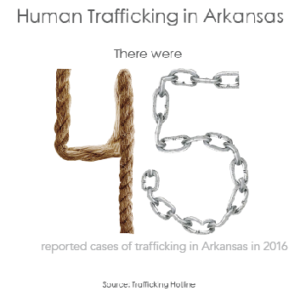![]()

Hotel rooms all over the United States are used to exhibit victims of sex trafficking with the intent of selling bodies of men and women for solicited sex. TraffickCam, a new app, is a tool used by investigators to locate hotels where people are trafficked.
Online sex advertisements can contain critical clues for investigators working on cases of trafficking. Investigators use the furniture in the room, the type of blinds, the style of rug and every noticeable detail in the advertisements to locate the hotels these photos were taken in and save victims of trafficking.
TraffickCam app’s home screen reads: “Help fight trafficking by uploading photos of your hotel room. These photos will be used to determine where perpetrators of sex trafficking are committing their crimes.” Users can give their hotel name and submit four photos of their room to the app.
Krista Gay, founder of Students Against Sex Slavery and former JBU student, said “This builds a database of hotel rooms so that when an image or video is posted of an individual being trafficked, it is easier for the police to locate that hotel room or map the routes commonly used by traffickers.”
Gay said technology has made buying and selling individuals easier than ever before. “Previously, you had to go somewhere to buy humans: the street corner, a brothel, an auction. Police could go to these areas, conduct raids, and find victims and offenders at the same time. Now it’s not so easy,” she said.
Created by the Exchange Initiative and researchers at Washington University in 2015, TraffickCam is available to the public for use to help stop human trafficking. According to the TraffickCam app, the Exchange Initiative is committed to fighting the “commercial sexual exploitation of children. Their mission is to provide resources, information and networking solutions to combat sex trafficking in the United States.”
According to CNN, TraffickCam’s image tools change photos into data points and use patterns of the furniture and landmarks outside the windows. The details and patterns in the pictures help match the location.
Gay shared that there are already apps that use a preventative approach by blocking specific websites. These apps have to be put in place by the user, a parent or spouse blocking access to websites. “This app is unique because it helps police and victims and potentially help them, when other preventions have failed,” Gay said.
Over 150,000 hotels have been added to TraffickCam’s database and over 100,000 people have utilized the app to help change human trafficking, according to CNN.
Carissa Wierman, a senior family and human services major, said tools like this are useful to preventing sex trafficking.
“I want to do more to stop this exploitation of human life
and this app gives me a way to contribute my efforts,” she said.
When discussing sex trafficking, Gay often asks people to picture a child whom they are close to, like a sibling, niece or nephew. “And now picture that child being bought
and sold, like an animal or an object, for sex by grown-ups,”she said.
“It’s vulgar, uncomfortable and should be infuriating. But, this
is the reality for millions of children around the world. In the time it took you to read this,
children and other individuals have been bought and sold for sex. This is unacceptable,” Gay said.




